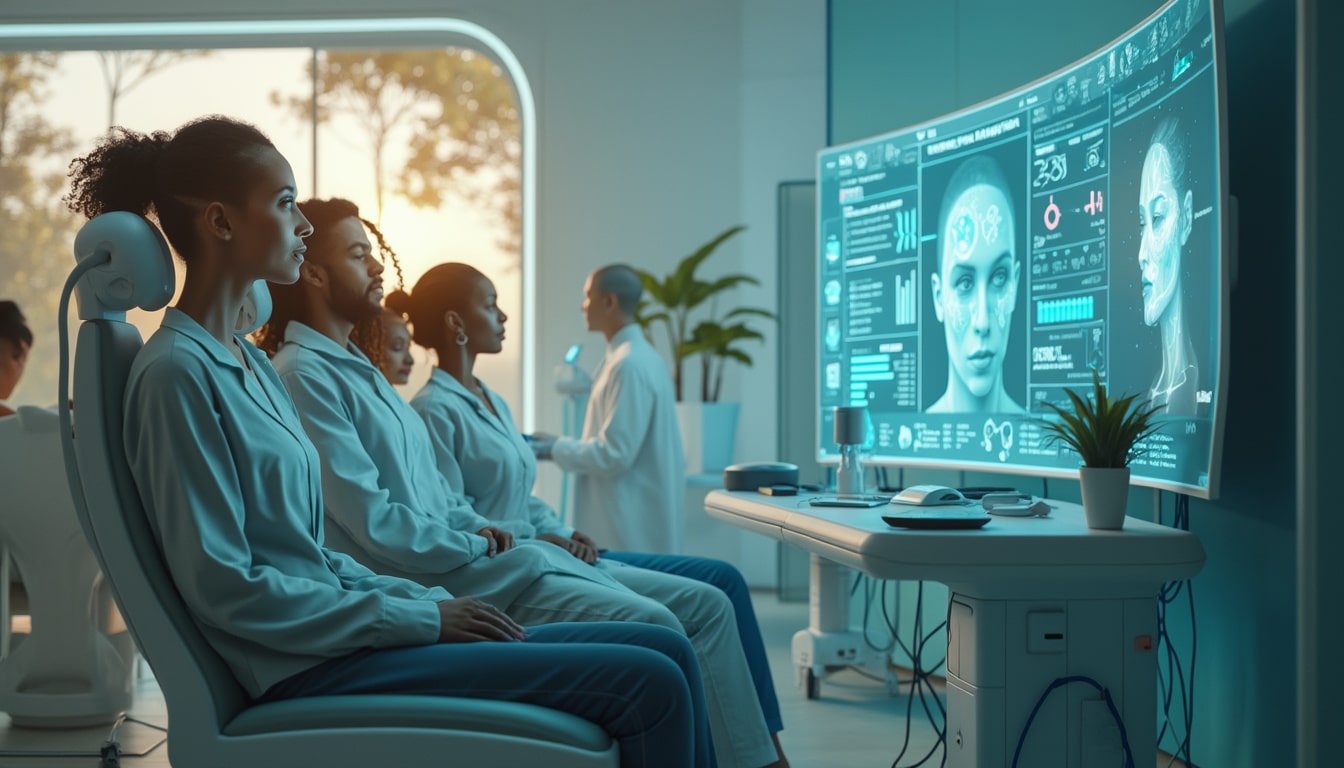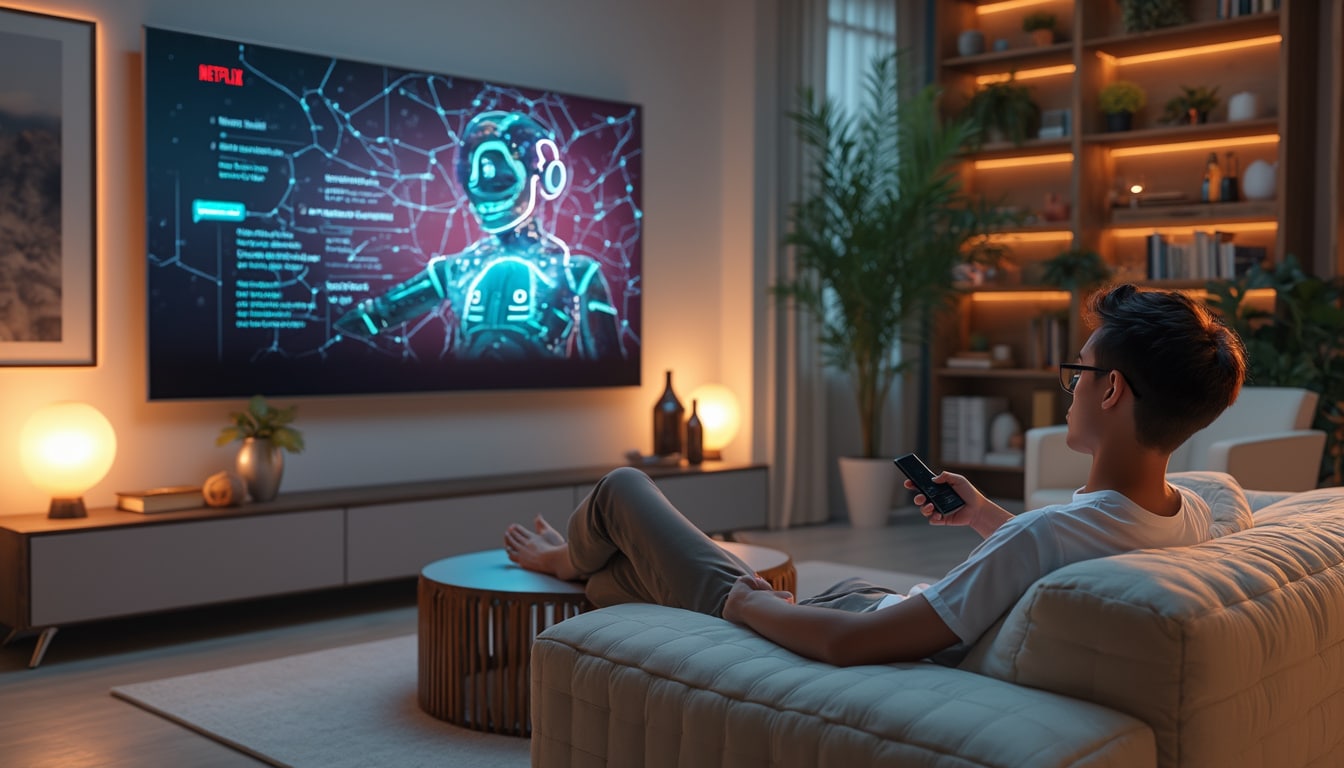What if a simple selfie could hold the key to your survival? Meet FaceAge, the cutting-edge AI tool that’s turning heads in the medical community. Developed by researchers at Mass General Brigham, this technology promises to revolutionize cancer treatment predictions.
Imagine snapping a photo and having it reveal not just your age, but your biological resilience against cancer. FaceAge doesn’t just count wrinkles or gray hairs; it delves deeper, analyzing subtle facial features to assess your ability to endure aggressive treatments. Dr. Ray Mak, a leading radio-oncologist, highlights how FaceAge can take the guesswork out of treatment plans, replacing intuition with precise data. Take Jay Ball, for instance, an 86-year-old who defied odds with a more aggressive radiotherapy regimen, supported by FaceAge’s insights into his youthful biology. The tool leverages a vast database of over 56,000 healthy faces and 6,000 cancer patients, revealing that those who appear older biologically have a significantly lower survival rate. However, it’s not all smooth sailing; experts urge caution, noting that factors like lighting and makeup can skew results. As AI continues to integrate into modern medicine, FaceAge stands at the forefront, promising a future where a smile could be your best defense against cancer.
FaceAge measures your biological age by examining areas such as muscle mass in the temples and skin laxity around the eyes, rather than your chronological age. This innovative approach allows doctors to tailor treatments more effectively, offering aggressive therapies to those who might otherwise be overlooked. Jay Ball’s remarkable recovery, four years post-treatment, underscores the potential of this technology. By confirming his biological age was a decade younger than his actual age, FaceAge provided the confidence needed to pursue a more intensive treatment plan. Researchers used a comprehensive public database to train FaceAge, finding that cancer patients typically appear five years older than they are, on average. This discrepancy is crucial for identifying high-risk patients, with those biologically over 85 facing the shortest survival times. On the flip side, more than 75% of patients estimated below 65 are still thriving five years later. Despite its promise, FaceAge requires further validation to account for variables like cosmetic alterations and image quality. Upcoming clinical trials aim to compare FaceAge’s predictions with medical professionals’ assessments, ensuring its accuracy and reliability in real-world settings.
Beyond predictive analytics, FaceAge represents a broader trend of AI integration in healthcare. Current applications include interpreting mammograms and managing electronic health records with unprecedented speed. Yet, with these advancements come significant challenges, such as mitigating cultural and racial biases inherent in AI models. The creators of FaceAge are diligently refining their algorithms to address these issues, ensuring fair and accurate assessments for all patients. Looking ahead, Dr. Mak and his team are contemplating even more ambitious goals, like potentially reversing the aging process through facial analysis. While this remains a distant objective, the groundwork laid by FaceAge could pave the way for groundbreaking discoveries in longevity and healthspan enhancement.

Imagine if a simple photograph could hold the key to predicting your chances of surviving cancer. Thanks to FaceAge, a groundbreaking AI tool developed by researchers at Mass General Brigham, this vision is becoming a reality. Unlike traditional methods that rely heavily on a doctor’s intuition, FaceAge offers a data-driven approach to assessing a patient’s ability to withstand aggressive treatments.
Table of contents
Togglehow does faceage evaluate biological age
FaceAge doesn’t just count the years you’ve lived; it examines the biological age visible on your face. By analyzing subtle facial features such as the muscle mass in the temples or the sagging around the eyes, the AI estimates a person’s biological resilience. This innovative approach allows doctors to make more informed decisions about the intensity of cancer treatments a patient can handle.
the science behind faceage
The AI tool meticulously examines specific areas of the face that are strong indicators of biological aging. For instance, the loss of muscle mass around the temples and the fine lines near the eyes provide crucial data points that traditional age assessments might overlook. By focusing on these micro-signs, FaceAge offers a more accurate picture of a patient’s overall health and treatment readiness.
why faceage matters in cancer treatment
Traditionally, doctors have relied on their instincts when determining the appropriate treatment for cancer patients. Dr. Ray Mak, a radio-oncologist at Brigham and Women’s Hospital, highlights that when a patient appears older than their actual age, doctors might hesitate to offer them intensive treatments. Conversely, patients who seem younger and healthier might benefit from more aggressive therapies. FaceAge bridges this gap by providing an objective assessment, ensuring that patients receive the most suitable care based on their biological condition.
real-world application: jay ball’s story
Consider the case of Jay Ball, an 86-year-old patient whose exceptional vitality surprised the medical team. Diagnosed with lung cancer, Ball underwent a more aggressive radiotherapy regimen than typically recommended for his age. Four years later, he remains in good health, and FaceAge confirmed that his biological age was about ten years younger than his chronological age. Ball credits his longevity to a happy marriage, a love for wordplay, technological curiosity, and a long-lived family, with relatives exceeding 90 years.
how was faceage developed
The development of FaceAge involved analyzing over 56,000 public photographs of healthy individuals and comparing them with more than 6,000 photos of cancer patients taken just before their treatment. The results were striking: patients with cancer appeared, on average, five years older than their actual age. According to Hugo Aerts, co-author of the study, FaceAge effectively identifies high-risk patients, with those biologically over 85 having the shortest survival rates, while over 75% of those estimated to be under 65 were still alive five years later.
what faceage analyzes on a photograph
Contrary to popular belief, FaceAge doesn’t focus solely on obvious signs like white hair or forehead wrinkles. Instead, it delves deeper into anatomical details such as the muscle mass around the temples, eye hollows, and the fine structure of nasal tissues. Dr. Mak explains that these areas undergo significant changes with age, more so than other aesthetic markers. These subtle changes provide the AI with the necessary data to make accurate biological age estimations.
factors influencing faceage accuracy
Alpa Patel from the American Cancer Society acknowledges FaceAge’s potential but urges caution. Various factors like lighting, makeup, plastic surgery, and even camera quality can affect the AI’s analysis. Therefore, thorough validation and guidelines are essential before FaceAge can be widely implemented in clinical settings. Dr. Mak concurs, mentioning that his team is launching a clinical trial with 64 lung cancer patients to compare FaceAge’s predictions with those of medical professionals.
the integration of ai in modern medicine
FaceAge emerges at a time when AI technologies are increasingly embedded in healthcare. From analyzing mammograms and ophthalmic images to managing electronic medical records, AI is revolutionizing how medical data is processed and utilized. These advancements enable healthcare providers to achieve in-depth insights and make quicker, more informed decisions. For instance, similar AI tools can summarize months of medical history in just a few hours, significantly enhancing treatment planning and patient care.
addressing challenges with ai in healthcare
Despite its potential, the integration of AI in medicine comes with challenges. Andrew Beam, a researcher at NEJM AI, warns about the biases that AI can perpetuate, including cultural, gender, and racial biases. The FaceAge team has taken steps to mitigate these issues by using diverse data sets and continually refining their model to minimize bias. Additionally, they are working on improving the accuracy of FaceAge for patients who have undergone cosmetic procedures, ensuring that the tool remains reliable across varied patient profiles.
future prospects: reversing the aging clock
The research team led by Dr. Mak is already contemplating more ambitious projects, such as the possibility of reversing the aging process through image analysis. While this isn’t an immediate goal for FaceAge, the idea of extending human life by monitoring facial changes sparks excitement and curiosity. Future studies may explore how continuous monitoring of facial features could contribute to longevity research, potentially opening new frontiers in anti-aging therapies.
related innovations in cancer treatment
FaceAge is part of a broader wave of innovations transforming cancer care. For instance, a revolutionary innovation by a native of Rouen ensures that patients never forget their medications again, enhancing treatment adherence and outcomes. Moreover, on World Cancer Day, AI has been highlighted for its role in revolutionizing personalized medicine, tailoring treatments to individual patient profiles for better efficacy.
supporting patients beyond treatment
Beyond predictive tools, innovations like hair restoration technologies are restoring confidence in women undergoing cancer treatment. Additionally, initiatives like DreamPath are pioneering advancements in biological sample traceability, ensuring the integrity and accessibility of crucial medical data.
emerging technologies: ai-powered cancer vaccines
In the realm of cutting-edge research, a Russian innovator has developed an AI-powered cancer vaccine, sparking debates on its feasibility and ethical implications. While some question if it’s « too good to be true, » the integration of AI in vaccine development holds promise for creating more effective and targeted cancer therapies. This aligns with the ongoing efforts to harness AI’s full potential in combating cancer, complementing tools like FaceAge.
While FaceAge is not ready to replace the nuanced judgment of seasoned oncologists, it represents a significant step towards more personalized and accurate cancer treatment strategies. As AI continues to permeate various aspects of healthcare, balancing innovation with ethical considerations and rigorous validation will be crucial. The future of cancer care lies in the harmonious integration of human expertise and artificial intelligence, offering hope for improved survival rates and enhanced patient well-being.
For more insights on groundbreaking medical innovations, visit this article and explore other fascinating developments at Innovanews.














